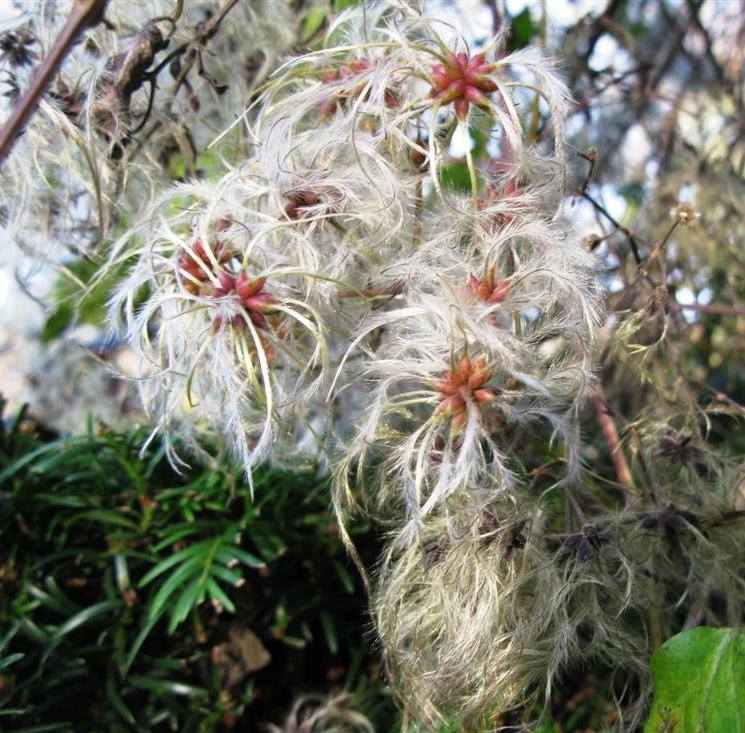
About the forest rank or Clematis vitalba
The seed fluff adorn the dark forests in the winter, but it is the meter-long, gnatty vine branches that stand out most and invite us to sail through the winter forests like Tarzan.
The wild Clematis or Bosrank still holds us in the grip of climbing and winding, stitching and hanging. 'The hot and sharp taste of the Clematis shows its warm power. It is used up to the rings to hold the sagged Mother (womb). The Flowers, Seeds, Bark and Carrot have a burning power. ' This and much more, a.o. that the plant heals lepers, is reported in old herbal books about our most beautiful and highly climbing liana, the Bosrank, formerly called Vinkoorde.
In Limburg, Voerstreek and the Ardennes she is very common, rare elsewhere. A lot of people have put her in their garden and enjoy every year the vitality with which she can bear, jumps, hangs, overgrows the tree that she grows.. On all sides, the nimble stems grabs and spreads out her leafy pairs. Nobody believes you when you say it's a Ranuncle, so a converted Buttercup. An abundance of greenish-white flower stars blooms throughout the summer. They leave a dumpling of fruits, which carry a long thin beak, occupied with long silky hairs. They are visible until beyond the winter. The British call them O ld man's beard and the whole plant Traveller's joy. The old Gilbert White wrote in November 1788 in his diary, how the grey dots Clematispluis flew through the air like insects in a storm. Clematis fruits with dewy cobwebs are still attached to the liana, especially when ripened among the most photogenic things in nature.
Our wild Clematis is now no longer planted in the garden, it has been replaced by the many beautiful, yet also protserige ornamental species and yes, it is also not recommended to let go of this strongly growing liana just on our mini-garden. Although I personally find nothing more beautiful and romantic than such a jungle right at hand.
- Comments (0)
- Recommended
- Milestones




Here are your recommended items...
Here are your milestones...





